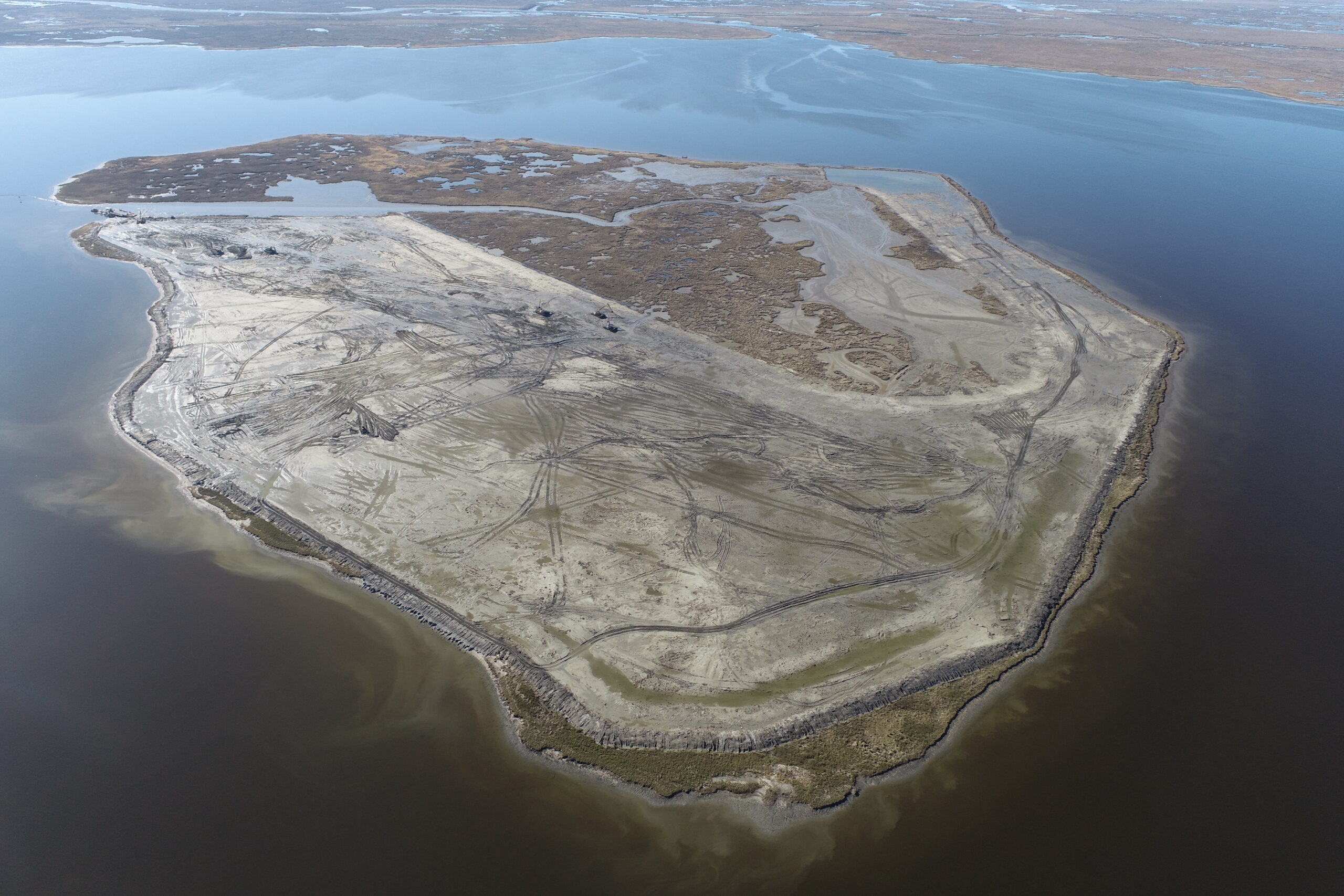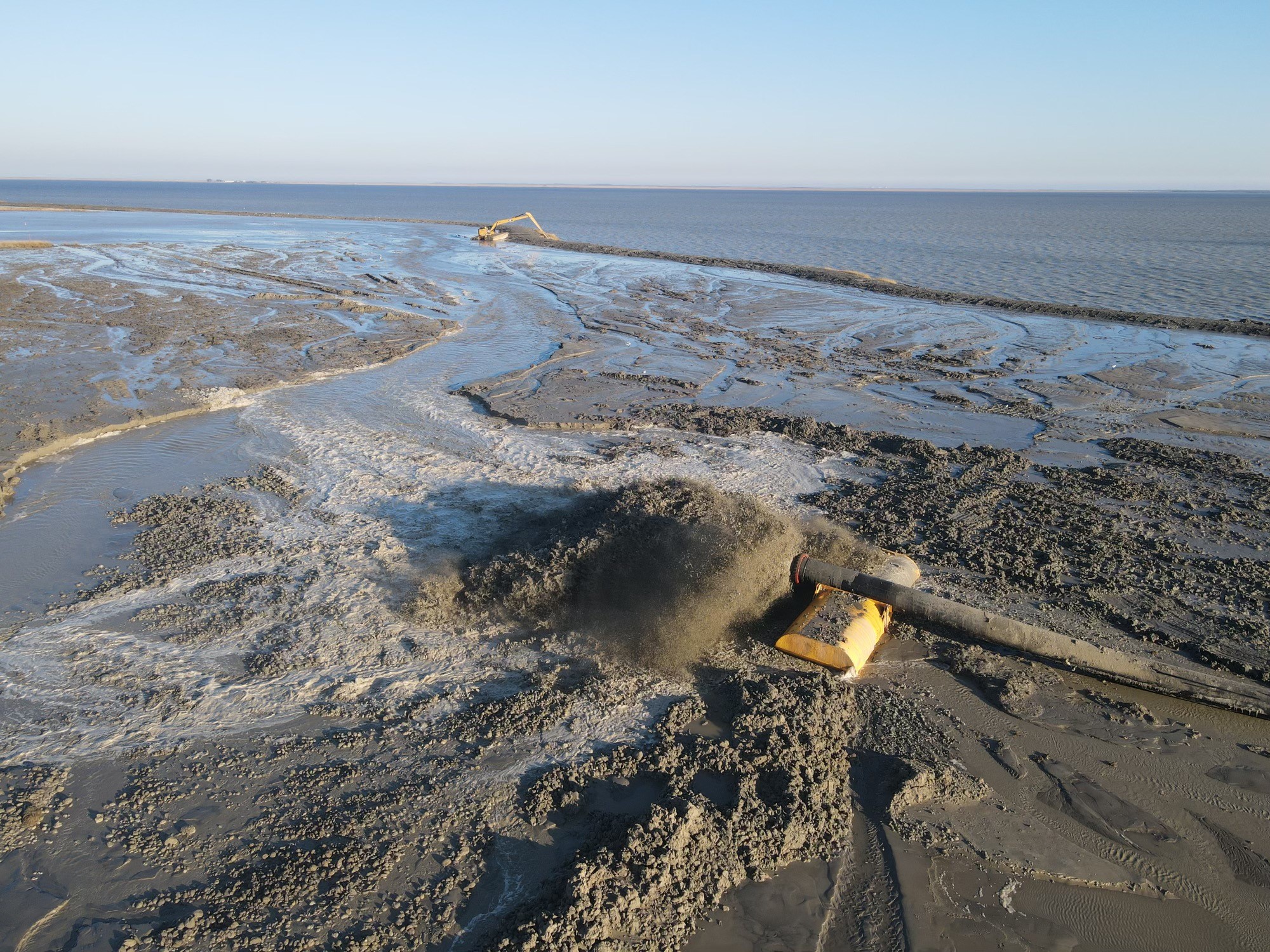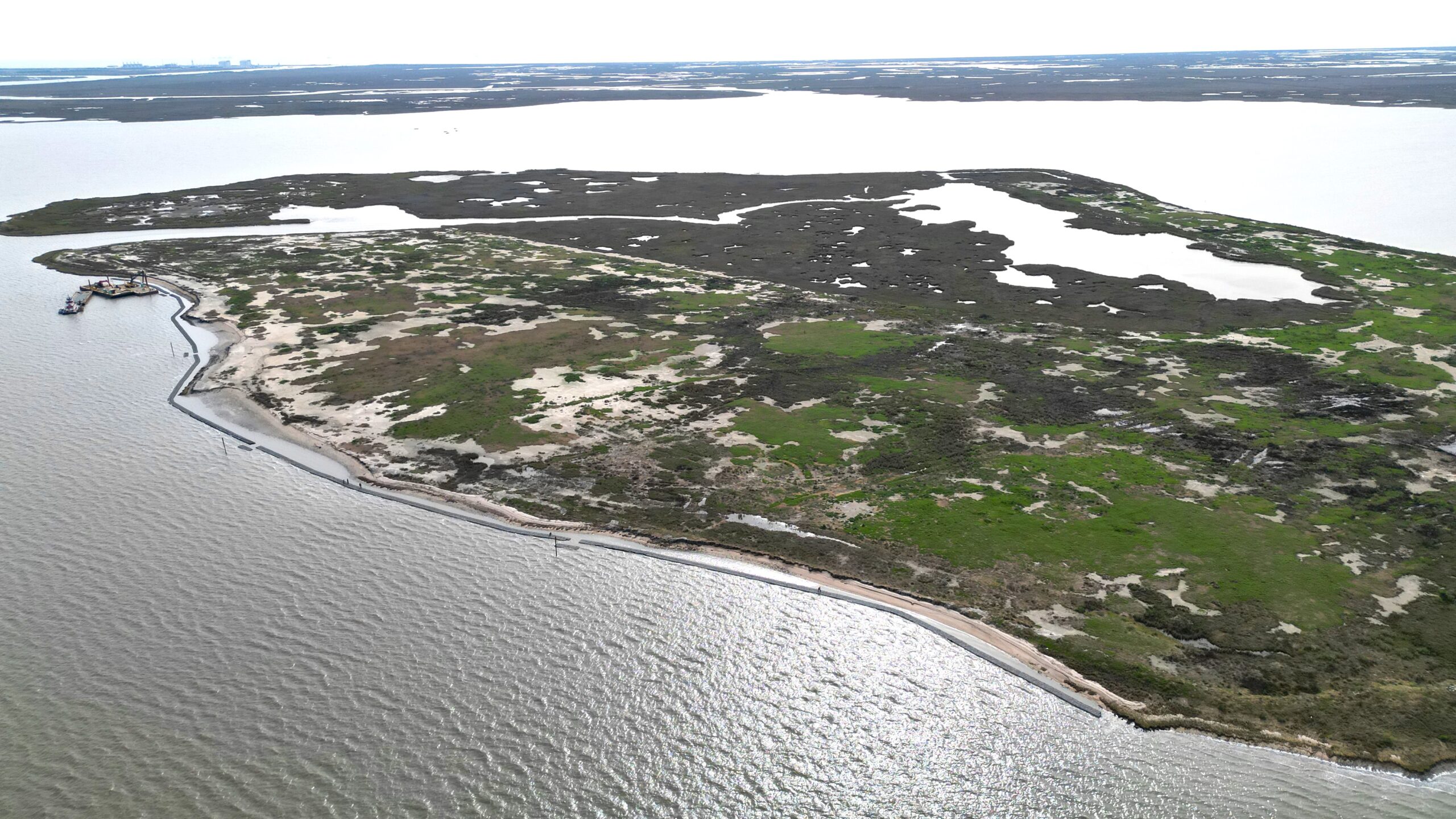Rabbit Island – Pelican Habitat Restoration
Cameron Parish, Louisiana
LA Coastal Protection & Restoration Authority
Project Overview
As part of Louisiana’s Natural Resource Damage Assessment (NRDA) Restoration Plan, Rabbit Island was selected for restoration of the state’s most western colonial water bird colony and the only pelican nesting habitat west of the Atchafalaya River. The Project Area is located in Region 4, the Calcasieu-Sabine Basin, Cameron Parish, approximately 4.7 miles northwest of Cameron within the southwestern portion of Calcasieu Lake, i.e., West Cove. Most of Rabbit Island’s remaining 200 acres were either open water or land that was at or below sea level prior to the initial island restoration. This project successfully delivered dredge spoil from the Calcasieu Ship Channel that was strategically placed within a 165-acre footprint on Rabbit Island to restore optimal Colonial Wading Bird nesting habitat. In addition, 2,520 feet of gabion baskets were installed to act as a shoreline protection feature to prevent land loss due to erosional impacts from tidal and wave forces. Royal led the design team, as well as the collection and analysis of all pertinent data types, evaluation of sustainable restoration alternatives, and preparation of final design plans and specifications for bidding.
Project Work and Royal Solutions
Royal initially performed a data gap analysis where all existing topographic/bathymetric data, geotechnical reports, and all coastal climatological data were researched, reviewed, and assessed. Our engineers then strategically selected a dredge borrow area, access route, and fill area templates in coordination with the team’s wildlife biologists who advised on bird nesting criteria as well as potential oyster impacts. We selected a dredge borrow area within the Calcasieu Ship Channel, a federally authorized and USACE-maintained navigation channel. Borrow area delineation was accomplished through vibracore sampling and seismic sub-bottom profiling through which a relic riverbed sand deposit was delineated. This sandy sediment allowed the team to better predict settlement, control dredge outfall, lower cut-to-fill ratios, and reduce dewatering time. Sonar remote sensing also identified a cultural anomaly, which involved archaeological analysis and avoidance in the dredge cut design.
One unique challenge presented by this project was the fact that West Cove Bay is classified as a Tier 1 oyster seed ground, which meant navigating around very restricted access to the island. Therefore, to prevent turbidity plumes, no equipment access dredging was allowed, and boat traffic to the island required traversing at high water to avoid prop washing. Royal deployed a water level and wave data sonde within the bay that facilitated a hydrodynamic process evaluation, which informed the erosion protection design in addition to turbidity screen and access specifications.
Designing bird island habitat also presented additional constraints to typical marsh design criteria, since bird habitat must be designed to remain above high tide elevations to prevent nest inundation. In addressing this challenge, the design team developed geotechnical settlement versus time curves for a twenty-year design life that incorporated water levels, subsidence, regional sea level rise, and consolidation of foundation soils and dredge slurry. A water level exceedance calculation was then performed to determine inundation probabilities for the 10th and 90th percentile values utilized to select target elevations. As the island is an active bird rookery, no on-island work was performed during nesting season (roughly February through August). Specific and strict contract language was developed concerning start/stop dates, early mobilization, late demobilization, and working conditions if nesting was occurring during construction to include abatement and noise reduction.


